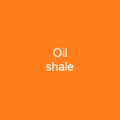Shale Oil Extraction: A Journey Through Time and Technology
Imagine a world where unconventional oil production meets ancient history and modern innovation. That’s exactly what shale oil extraction is all about.
The Genesis of Shale Oil Extraction
Shale oil extraction, an industrial process that converts kerogen in oil shale into shale oil through pyrolysis, hydrogenation, or thermal dissolution, has a fascinating history. It was first described by Assyrian physician Masawaih al-Mardini in the 10th century and granted its first formal patent to three Englishmen in 1684. Fast forward to the late 19th century, and modern industrial extraction began in France and Scotland.
Modern Revival: A Response to High Oil Prices
The industry experienced a significant downturn in the mid-20th century but saw renewed interest in the early 21st century due to soaring petroleum prices. This led to the development and testing of newer technologies, with major long-standing extraction industries operating in Estonia, Brazil, and China as of 2010.
Technological Innovations: Pyrolysis, Hydrogenation, and Thermal Dissolution
The processing principles for shale oil extraction involve pyrolysis, hydrogenation, or thermal dissolution. These methods decompose oil shale and convert its kerogen into shale oil—a petroleum-like synthetic crude oil. The oldest method involves pyrolysis (retorting or destructive distillation), where oil shale is heated without oxygen to produce condensable vapors and combustible gas.
Ex Situ vs In Situ: A Tale of Two Processes
Ex situ processing involves crushing oil shale into smaller pieces, increasing surface area for better extraction. In situ processes involve heating decomposition at lower temperatures over a longer period to reduce energy consumption and carbon dioxide emissions. Both methods have their unique advantages and challenges.
Technological Differentiation: By Particle Size, Retort Orientation, and Complexity
The technologies can be differentiated based on raw oil shale particle size, retort orientation, and complexity of technology. For instance, by raw oil shale particle size, gas heat carriers process lumps between 10 to 100 mm, while solid heat carriers process fines less than 10 mm.
Ex situ internal combustion technologies involve burning materials within a vertical shaft retort to supply heat for pyrolysis. Raw oil shale particles between 12 mm and 75 mm in size are fed into the top of the retort, with shale oil mist, evolved gases, and cooled combustion gases removed from the top.
Hot recycled solids technologies deliver heat to the oil shale by recycling hot solid particles—typically oil shale ash. These technologies usually employ rotating kiln or fluidized bed retorts, fed by fine oil shale particles generally having a diameter of less than 10 millimeters (0.4 in).
Kerogen is tightly bound to the shale and resists dissolution by most solvents. Extraction using especially reactive fluids has been tested, including those in a supercritical state. Reactive fluid technologies are suitable for processing oil shales with low hydrogen content.
In situ technologies heat oil shale underground by injecting hot fluids into the rock formation or using linear or planar heating sources followed by thermal conduction and convection to distribute heat through the target area. These technologies are potentially able to extract more shale oil from a given area of land than conventional ex situ processing technologies.
Shale oil is a complex mixture of hydrocarbons, heteroatoms, and mineral particles that can contain significant quantities of oxygen, nitrogen, sulfur, and metals. It has different properties than conventional crude oil, such as being less fluid and having a higher concentration of polycyclic aromatic hydrocarbons.
The economics of shale oil production are uncertain, with capital costs ranging from $3-10 billion for ex-situ processing. The cost of producing shale oil is estimated to be around $70-95 per barrel in the United States, with potential reductions as production increases.
The viability of oil shale as an energy source is measured by the Energy Returned on Energy Invested (EROEI) ratio. EROEI estimates vary between 0.7 and 13.3, with some companies proposing ratios between 3 and 10. Combined technologies to increase EROEI include using process waste heat from gasification or combustion of residual carbon.
Environmental considerations include acid drainage, metal introduction into water sources, increased erosion, sulfur-gas emissions, air pollution, and greenhouse gas emissions. Environmentalists oppose oil shale production due to its environmental impact. Experimental in situ conversion processes and carbon capture technologies may reduce concerns but also pose new problems like groundwater pollution.

As we continue to explore and refine shale oil extraction technologies, the balance between economic benefits and environmental sustainability remains a critical challenge. The future of this industry will depend on our ability to innovate while minimizing its ecological footprint.
You want to know more about Shale oil extraction?
This page is based on the article Shale oil extraction published in Wikipedia (retrieved on December 1, 2024) and was automatically summarized using artificial intelligence.





